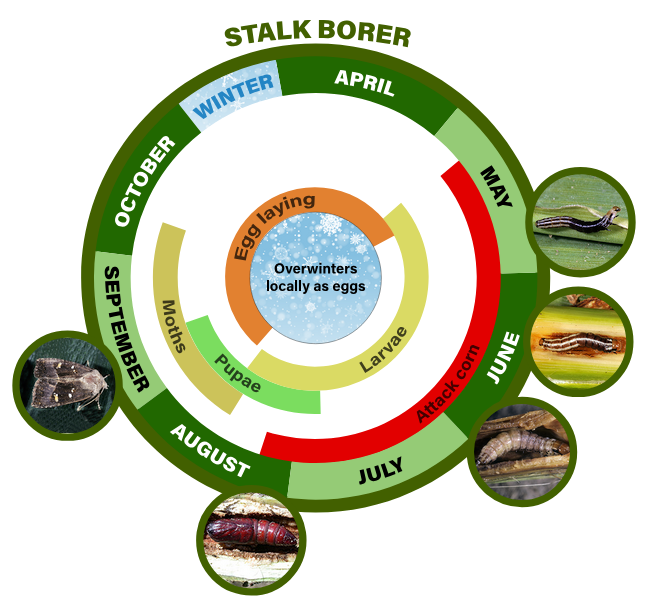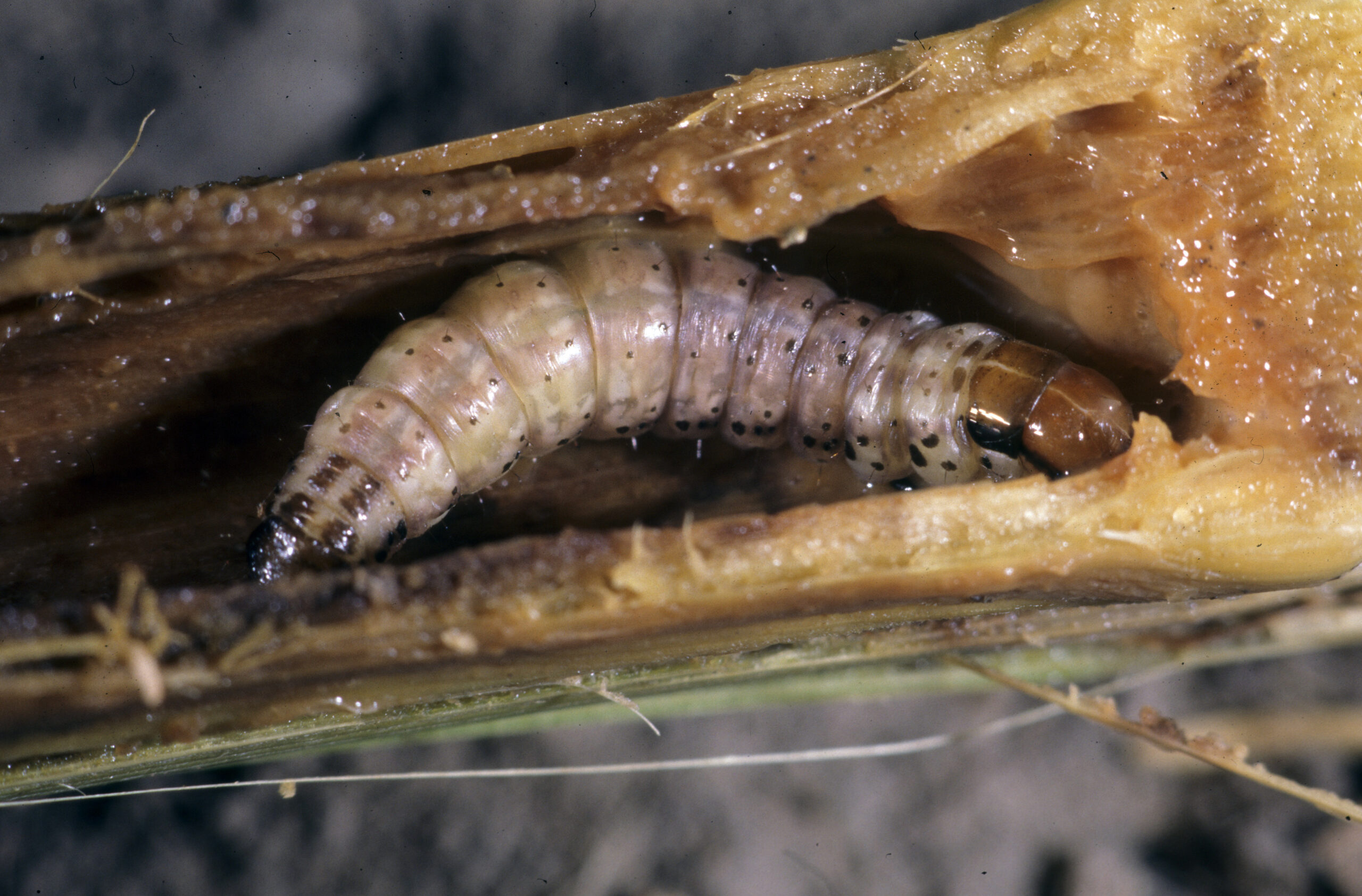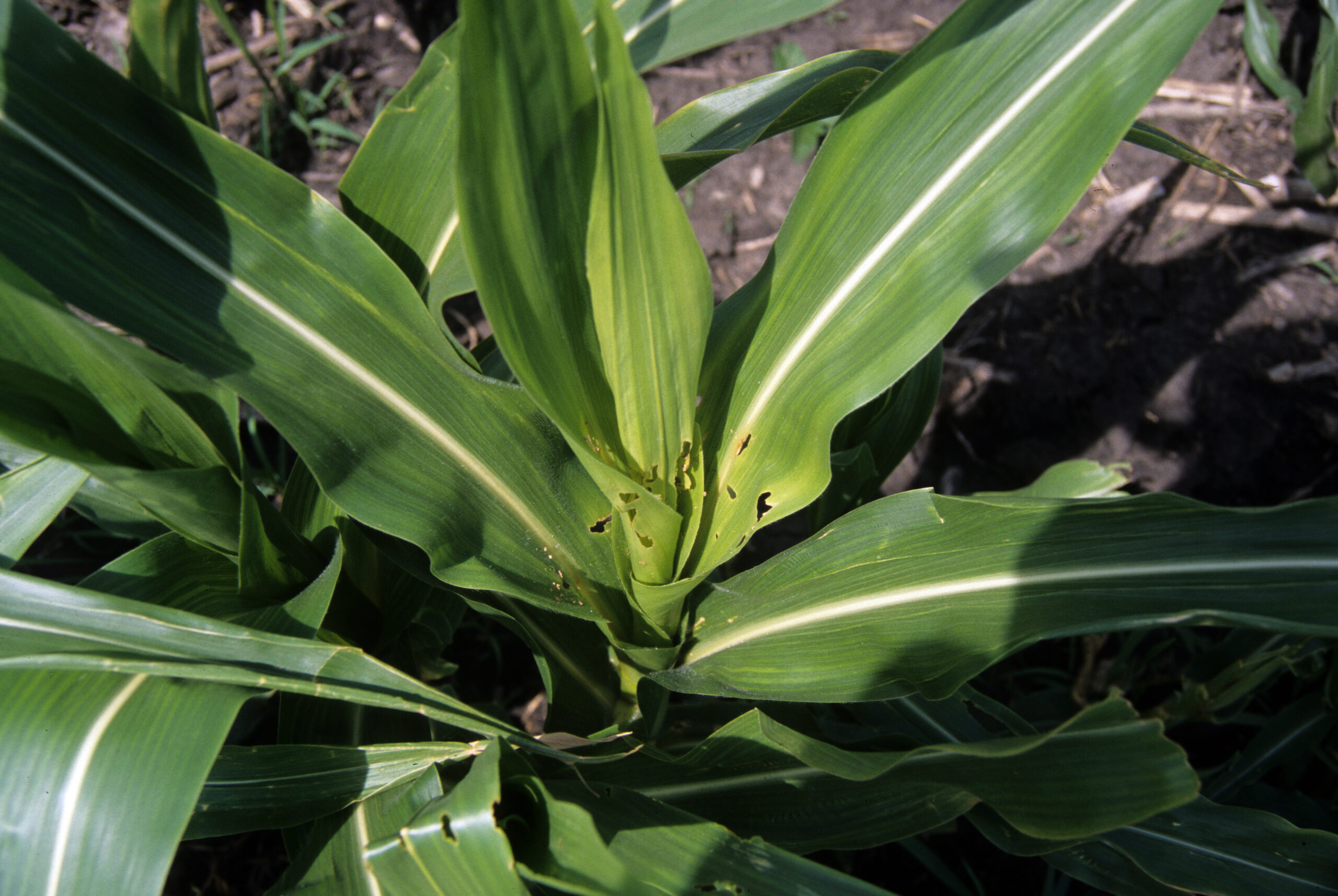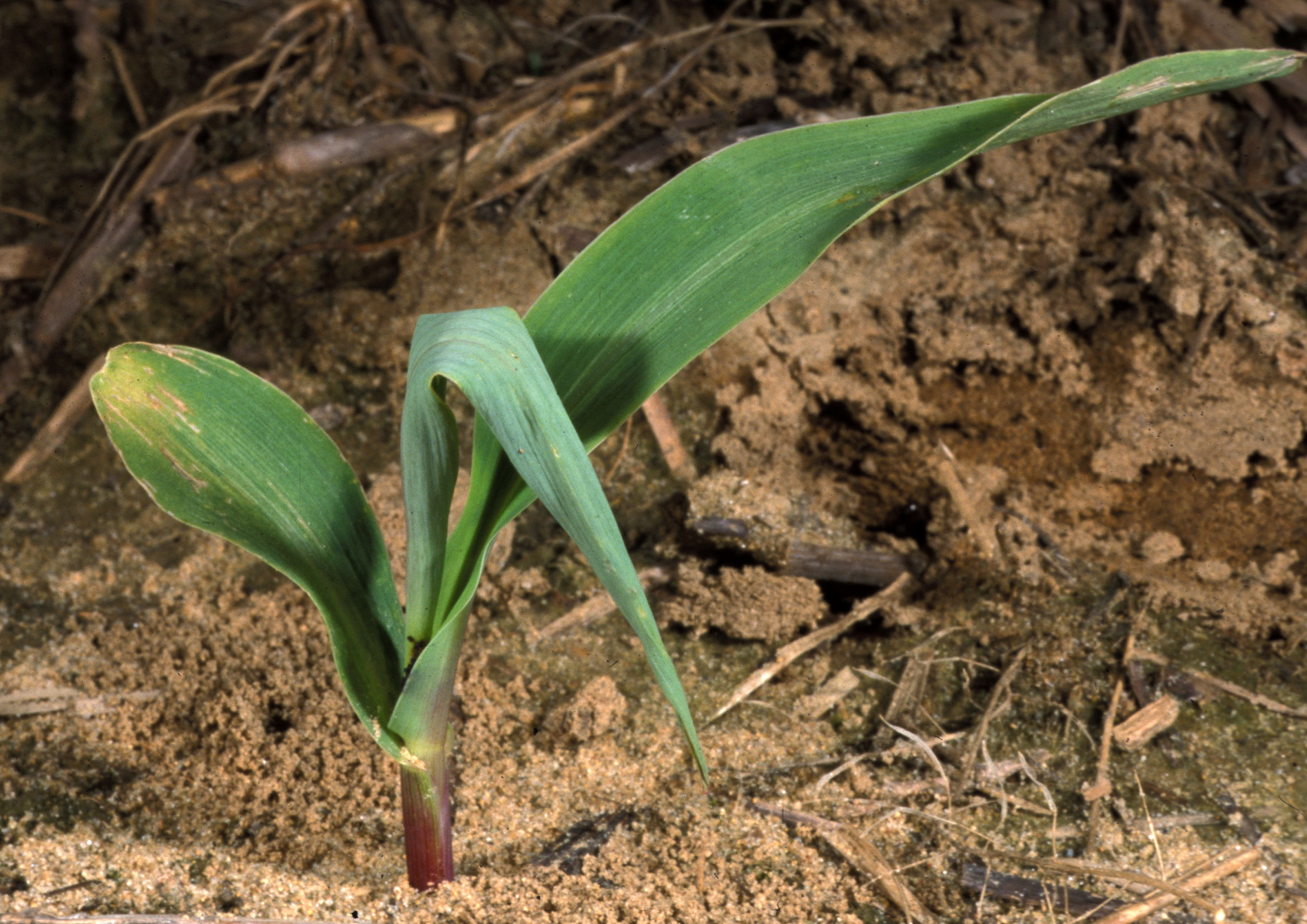Stalk BorerS (Corn)
Papaipema nebris Guenee
Search the Pest & Crop Newsletter

The ability to see these full-sized life-cycle images is currently disabled to resolve an issue.
Appearance and Life History

Photo by J. Obermeyer
Stalk borers are distributed throughout the United States east of the Rocky Mountains, attacking many species of crop and weed plants. They can cause damage throughout a field where reduced tillage is practiced and/or where cover crops are used.
The larva is easily recognized by the prominent longitudinal white stripes on the anterior and posterior ends. The stripes are interrupted by a dark purple area on the third thoracic segment and the first three abdominal segments. Full grown larva are 1-1/4 inches (3.8 cm) long. The last larval instar does not have the prominent white stripes and dark purple area. The larvae pupate in late July, usually just below the soil surface or sometimes inside the stem of the host plant.
The adult stalk borer is a grayish moth, with or without silver spots on the forewings.
Eggs are laid, typically on grasses and some broadleaf weeds, from late August until frost. Larvae hatch in May and bore into the stems of nearby weeds or crop plants. They are found throughout the summer with pupation occurring in August.
Damage
Damage appears as round to irregular shaped rows of holes through the unfolded leaves which may become tattered with time. Many plants will have an unnatural growth, being twisted or bent over, presenting a stunted appearance and will not produce an ear. Larvae may enter corn and other plants at the side of the stem and burrow upward, causing the center leaves of the plant to die (“dead heart”). They may also enter small corn plants from the whorl and work downward, causing part of the plant to wilt and die. Larval damage occurs from May through July.
Sampling Method
- Determine time of sampling for stalk borer using a degree day accumulation model, usually available in state extension pest newsletters. In reference to a model developed by Iowa State University using a base threshold of 41° F (5° C) from January 1, egg hatch and initial infestation will take place around 600 degree days. Migration of the larvae from initial host to corn occurs at about 1,400 degree days.
- When scouting conventionally tilled fields, examine corn plants along fence rows, ditch banks, grass waterways, or where weed patches, e.g. giant ragweed, existed the previous year. Examine 20 corn plants in 5 random locations to determine percent infestation.
- In reduced tillage fields, fields with a cover crop, or weedy (grasses) fields, inspect 100 plants in 5 random locations.
- Record the number of plants infested and determine the location of the worms, such as in the whorl, stalk, etc.
- When cover crops are destroyed (i.e., burned down with an herbicide, etc.), stalk borers may be noted moving to corn. Sample for stalk borers a few days after the cover crop is destroyed.
- Poor weed control with translocated herbicides can sometimes be attributed to stalk borer damage in stems of giant ragweed and marestail.
Management Guidelines
Corn Insect Control Recommendations:
- There are no rescue treatments for stalk borers once they enter the plant. In reduced tillage or weedy situations, treatment may be advisable if the cover crop or weeds in the field are infested prior to planting. A broadcast application of a contact insecticide applied with or after a burn-down herbicide may be effective. With fast-acting burn-down herbicides, the insecticide, if compatible, can be tank-mixed with the herbicide or applied 1 to 2 days following the application of the herbicide. When a translocated, slow-acting herbicide is used, the larvae will not be flushed from their grass hosts for approximately two weeks. Thus, the insecticide should be applied once the grass begins to die.
- Early instar stalk borers can be controlled before they enter the plant if a sufficient number of plants show leaf feeding. Control of populations moving into a field from field borders is also possible with a broadcast treatment along the edge of the field and in infested areas within a field. In some cases the elimination of winter cover crops, or good weed control, may be necessary to prevent stalk borer damage.




